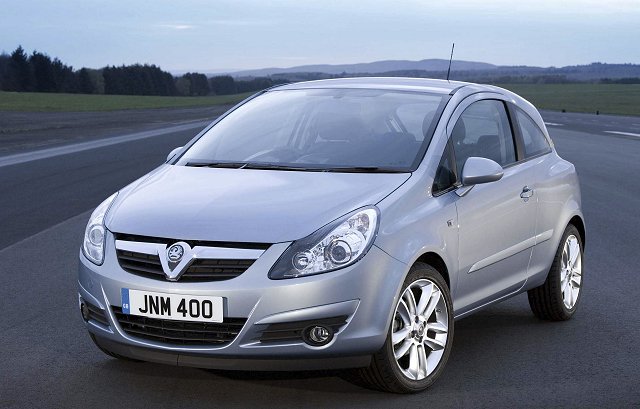Vauxhall
Vauxhall Corsa Ecoflex review
Compared with its fiercest rival, the £14,962 Ford Fiesta Econetic, the old-model Corsa Ecoflex was an environmental hairshirt – great to look at, but that was about the only part that remained of the strong contender for the 2007 European Car of the Year Award.
The turbodiesel was leaden and unwilling to rev, the gearbox was superfluous. The suspension made it feel like you were perched on the roof and the complete absence of driver feedback was worthy of referral to the Geneva Convention paragraphs on passenger abuse.
The Corsa Ecoflex has been revamped for 2010. The result went on sale on April 1, with headline CO2 emissions of 98g/km and an EU Combined fuel economy of 76.3mpg (coincidentally, identical to the Fiesta's).
The Corsa's bodywork and cabin are unchanged, which means you need to be careful which trim package you are buying, but choose rightly and the result is attractive, comfortable and spacious.
The chassis benefits from a number of revisions to suspension and steering, with revalved dampers, new software for the electronic power steering to increase effort at low speeds and softer front suspension to improve the urban ride quality.
Despite the large number of Ecoflex-badged models, only a three-door, 94bhp/140lb ft, 1.3-litre CDTi diesel in S, Energy or Exclusiv trim levels achieves the magic numbers of 76.3mpg and 98g/km. It has a top speed of 110mph and does 0-62mph in 11.5sec.
We drove new and old Ecoflex diesels models back-to-back over an identical route at identical speeds. The old car managed 67.9mpg, the new 71.9mpg, which is an impressive gain.
The improvements are immediately noticeable. The steering has life and the suspension is now cossetting and subtle rather than slap-in-the-face crude. This is no performance machine, but there's a sharper mien and a much improved urban ride quality.
The engine doesn't lug from low revs as well as the previous unit, but it rewards a careful watch on the rev counter to chime gearchanges early. There's a useful amount of low-end torque, although you need to rev it to get anywhere near maximum performance – which, of course, does little for the economy.
Town dwellers should wait until this autumn when the Ecoflex model gets a standard stop/start system, which can save up to 10 per cent in urban areas.
We drove new and old Ecoflex diesels models back-to-back over an identical route at identical speeds. The old car managed 67.9mpg, the new 71.9mpg, which is an impressive gain.
The improvements are immediately noticeable. The steering has life and the suspension is now cossetting and subtle rather than slap-in-the-face crude. This is no performance machine, but there's a sharper mien and a much improved urban ride quality.
The engine doesn't lug from low revs as well as the previous unit, but it rewards a careful watch on the rev counter to chime gearchanges early. There's a useful amount of low-end torque, although you need to rev it to get anywhere near maximum performance – which, of course, does little for the economy.
Town dwellers should wait until this autumn when the Ecoflex model gets a standard stop/start system, which can save up to 10 per cent in urban areas.
The mixing and matching of specifications is far too complicated to go into here, so I’ll concentrate on the £9,370 test car, which is the mid-range, 3-door Club. Losing two doors gains you a 60:40, folding rear seat that increases the luggage capacity from 285-litres, under the parcel shelf, to 700-litres measured to the window-line and 1,100-litres to the roof.
The boot floor is at the same height as the rear bumper, making it easy to load but it lifts to reveal a fairly shallow compartment, in which to hide and protect vulnerable items. This DualFloor can also be lowered to the bottom of the boot for carrying taller goods. Another thoughtful touch is that the parcel shelf can be secured against the back seat instead of leaving it behind or trying to find a home for it when it has been removed.
WE'D all like to have the best in life but for most of us that never happens.
And sometimes the trick is finding something that looks just like the real deal - good enough to fool most people, but in reality isn't quite the real thing.It's like those fake watches you can buy abroad that people often think are the genuine article.
I've just driven the new Vauxhall Corsa SRi. It looks a dead ringer for the firm's Corsa VXR pocket rocket, which is at the top of the list for supermini hot hatch fans.






Tidak ada komentar:
Posting Komentar